Grande Caverne - a new show cave for Rodrigues, Mauritius
Abstract
The caves of the calcareous aeolianite of South-West Rodrigues (Mauritius, Indian Ocean) have been known since at least 1786 when the first bones of the extinct, flightless solitaire were collected from them. One cave, Caverne Patate, has been operated as a show cave for a very long time and, since flaming torches were used for lighting until 1990, has suffered considerably from soot deposits. Most of its accessible speleothems have been souvenired.
In 2001 Mauritian/Australian naturalist and entrepreneur, Owen Griffiths, conceived of a project to restore the native vegetation of part of the aeolianite plain of SW Rodrigues, reintroduce giant tortoises to the site and provide visitor access to the underlying caves. In due course a lease of nearly 20 hectares was obtained from the Rodrigues administration, a new company, François Leguat Ltd, was established to run the project and a program to breed the necessary tortoises was commenced on Mauritius. The author was invited to advise on the opening of Grande Caverne as a guided show cave and Caverne de la Vierge as a guided 'adventure' cave and to provide interpretative material. A Rodriguan with a natural history background has been engaged to run the cave tours and late in 2005 was given on-the-job training in South-West Western Australia through cooperation with the Augusta-Margaret River Tourist Bureau (Caveworks).
Planning of pathways in Grande Caverne commenced in September 2006 and initial tests of cave lighting were carried out. Recycled plastic planking is to be used for the pathway surface, supported by polyethylene pipe where it crosses sediment floors and steel framing where it is elevated. Handrails will be provided where necessary. The principle guiding the design and installation of the pathway is that it should have minimum impact on the cave and that all structures should be fully removable.
It is likely that lighting will utilise 12 volt dichroic lights but consideration is also being given to the use of state-of-the-art large 24 volt LED arrays. Complex lighting control systems will be avoided in favour of a simple physically-switched system which can be serviced by local personnel.
Current planning would have the giant tortoise and cave park open about late-July 2007.
The island of Rodrigues
The island of Rodrigues is situated in the Indian Ocean about 600 km east of Mauritius - and 5,000 km west of Australia. It is 108 sq. km in area - a little bigger than Maria Island (a part-karst national park off the east coast of Tasmania with a permanent population of about 5) and has a population of around 40,000. The direct depredations of humans and the progressive removal of much of the island's natural vegetation since people first settled there in 1691 (North-Coombes 1971) has led to the extinction of much of the endemic fauna, especially the birds and tortoises, and flora. Today virtually no area of natural habitat exists on the island; all of the original plant communities are considered extinct (Strahm 1989).
While the basement rocks of Rodrigues are of volcanic origin, there are small areas of aeolian calcarenite on the coast (Halliday & Middleton 1996), principally in the south-west (see Fig. 1). The major outcrop, about 800 ha in area, comprises Plaine Corail to the west and Plaine Caverne to the east, cut by the deeply incised Rivière Anse Quittor.
The island achieved a level of political autonomy during the planning of the project, with the creation of an elected regional assembly in 2002. Approvals gained from the central government had to be re-negotiated with the Regional Administration before the project could get underway. There is strong local support for the project which should have significant tourism, environmental and educational benefits.
The Giant Tortoise and Cave Park project
In the Plaine Caverne region, immediately east of Anse Quittor Nature Reserve, a private company, François Leguat Ltd1, is establishing a 20 ha habitat reserve for the re-introduction of giant tortoises (Fig. 2). The calcium-rich karst area is ideally suited to the raising of the tortoises and, while the two endemic species (Geochelone vosmaeri and G. peltastes) have long been extinct, most of what we know of them has come from remains preserved in the caves underlying this area (Griffiths 2001). The project involves introducing analogue species of tortoises from other Indian Ocean islands (G. gigantea from Aldabra and G. radiata from Madagascar), restoring as much of the original palm savannah vegetation as possible and opening two of the caves to visitors. Grande Caverne (also known at times as Caverne Tamarin) will be opened for guided tourist visits; Caverne de la Vierge will later be made available for 'adventure tours'; other caves on the site will be kept in their natural state for bona fide research.
It should be noted that another cave, Caverne Patate, is already operated as a show cave by the regional government, further east on Plaine Caverne. Tours have been run for many years with no specialist expertise, no plans and virtually no controls, resulting in the cave being severely degraded (Figs. 3, 4) (Middleton 1998, 1999). Minimal facilities are provided, hand torches (formerly flaming; now electric) are carried and the guides have no training and little understanding of geology, speleology, management or interpretation. There will inevitably be competition between the two operations and it is to be hoped that standards at the government-run cave will improve as a result.
Tourism is still in its infancy in Rodrigues and data on visitor numbers is scarce. The number of arrivals by plane in 1999 was 45,000, comprising 11,000 Rodriguans, 25,500 other Mauritians and 8,500 from overseas. It would be useful to know the number of visitors to Caverne Patate but the practice of selling a permit to each 'party', regardless of size, would make this data of limited value. Visitor numbers are expected to rise following the recent lengthening of the airstrip (allowing larger planes to land) and approval for the construction of two new hotels. At present the main tourist activities relate to the marine environment and local crafts. The tortoise park/cave project would significantly add to the 'inland' attractions.
The overall aim of the giant tortoise and cave project is to restore, to the extent practicable, the natural environment within the project area to provide an enjoyable quality 'natural' experience for visitors and the local community and to provide a facility for research and training in conservation biology for Mauritius (Griffiths 2001).
Specifically in relation to the karst and caves, the vision for the project is:
- the two caves restored where necessary and possible2;
- the range of karst features effectively protected and managed;
- conditions established under which visitors can experience and enjoy the surface karst features and underlying caves in safety;
- through interpretation, visitors gaining an understanding of the geological, geomorphological, palaeontological, biological and historic features of the Rodrigues karst; and
- the local community gaining an understanding of their environment and, from that, developing positive attitudes towards the maintenance of their remaining natural heritage (including areas that can be restored).
The primary theme of the whole project will be environmental protection and rehabilitation. The results of failure to protect the environment are dramatically demonstrated by the extinction of the giant tortoises and the solitaire, the remains of which have been preserved in the caves, the stripping of the original vegetation and, on a smaller scale, the destruction of speleothems in the caves. Positive aspects will be emphasised through the restoration programs, relating on the large scale to the vegetation, at the species level to the tortoises and at the micro level to the repair of some speleothems.
Presentation of Grande Caverne
The author was involved in development of the original concept plan for the project in 2001 and since 2005 has been advising on those aspects involving the caves and, in particular, the appropriate development of Grande Caverne (Fig. 5).
The route for a pathway has been selected (see Fig. 6) and pegged out on the ground. The route has been selected on the basis of:
- taking the visitor through the major parts of the known cave;
- providing views to most of the major recognised features;
- accessibility - generally a roof height of at least 1.6 m has been aimed at and a width of at least 1 m. Excavation and cutting of rock will be kept to a minimum and every effort will be made to avoid impacting flowstone.
- ease of construction - the walkway will lie on flat sediment surfaces where they are available.
Walkways will utilise recycled plastic planking, known as "Replas" and manufactured in Western Australia. Where the path crosses sediments the planking will be supported by polyethylene piping, 110mm in diameter which will simply rest on the floor. Where rocks - mainly roof breakdown - have to be crossed, elevated steel structures will be erected. In some places small bridges will be required and where changes of level are involved, staircases will be required. In general these will be keyed into the bedrock and concrete structures will be avoided wherever possible. The guiding principle will be to make any structures removable without having a long term detrimental impact on the cave. Handrails will be provided where necessary. There will be platforms at good viewpoints (Fig. 7) where information will be provided about the cave.
Lighting will be provided by a combination of large light-emitting diode (LED) arrays and dichroic (halogen) lights. Simple control systems will be employed, comprising switchboards at platforms. Lighting and wiring will be concealed. Low level track lighting will be provided on the walkway as required.
Interpretation will be provided through displays in the visitor centre, publications, signs and on the guided tours. The chief guide has received practical cave interpretation training at Margaret River in Western Australia, thanks to the cooperation of the Augusta-Margaret River Tourist Bureau and CaveWorks. Tours will start from the visitor centre and will thus cross part of Plaine Caverne in order to reach the cave. This will give opportunities for the guide to explain elements of the geology, topography, the karst landscape, the vegetation and its restoration, native fauna and human history. In the cave, interpretation will focus on the nature of the aeolianite, cave-forming processes, speleothems and the importance of the cave as a palaeontological site (Fig. 8).
In the future it is planned that Caverne de la Vierge, a somewhat smaller cave than Grande Caverne, will be opened for adventure tours, where visitors will carry individual lights but still be supervised by a guide. A pathway will be marked through the cave but will not be constructed.
Conclusion
The opening of Grande Caverne as a show cave - as part of the giant tortoise and cave park - is expected to make a significant contribution to tourism in Rodrigues, will result in the on-going protection of the cave and its rehabilitated environs and provide a valuable educational facility for the island.
References
Griffiths, O. 2001, 'Rodrigues Giant Tortoise Reserve and cave project proposal', submitted to Mauritian Ministry of Tourism, Nov. 2001.
Halliday, W.H. & Middleton, G. 1996 A subdued karst on the island of Rodrigues, Mauritius. pp. 3435-354 in JJ Fornós & A Ginés (Eds.) Karren Landforms Universitat de les Illes Balears: Palma de Mallorca
Middleton, G. 1998, 'Observations on the management of the caves of Rodrigues, particularly Caverne Patate', report to the Island Secretary, Port Mathurin, 20 October.
Middleton, G. 1999, Cave management in Mauritius, ACKMA Journal, 36:3-10.
North-Coombes, A. 1971 The island of Rodrigues. The author: Mauritius (reprinted 2002).
Strahm, W. 1989 Plant red data book for Rodrigues. Koeltz Scientific Books: Konigstein, Germany
1François Leguat, a French Huguenot, was the first settler in Rodrigues, in 1691-93. The company is headed by Owen Griffiths, an Australian/Mauritian zoologist who runs 'La Vanille Réserve des Mascareignes' on Mauritius.
2There has been discolouration of accessible speleothems during generations of uncontrolled visits, breakage of speleothems (in places pieces remain) and cattle have been allowed to use the entrance chamber of the main cave for shelter.
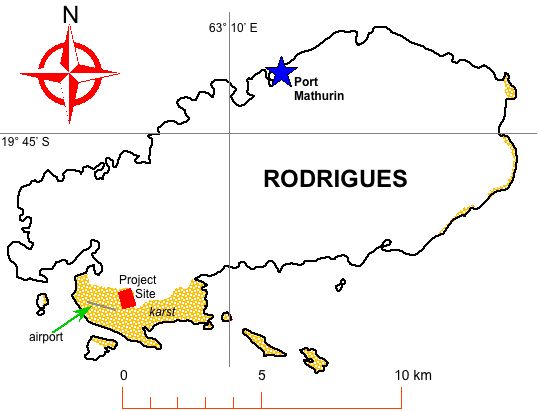
Fig. 1. The island of Rodrigues, Mauritius, showing the distribution of karst (aeolian calcarenite) and the location of the giant tortoise and cave project.
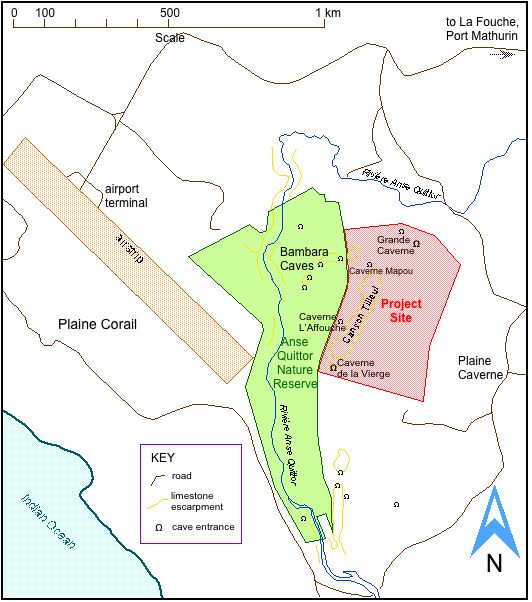
Fig. 2. Plan showing the project site in south-west Rodrigues and the location of the principal caves

Fig. 3. For about 200 years - until 1991 - visitors were conducted through Caverne Patate with the aid of flaming torches. The accumulation of soot in the cave has been highly destructive.
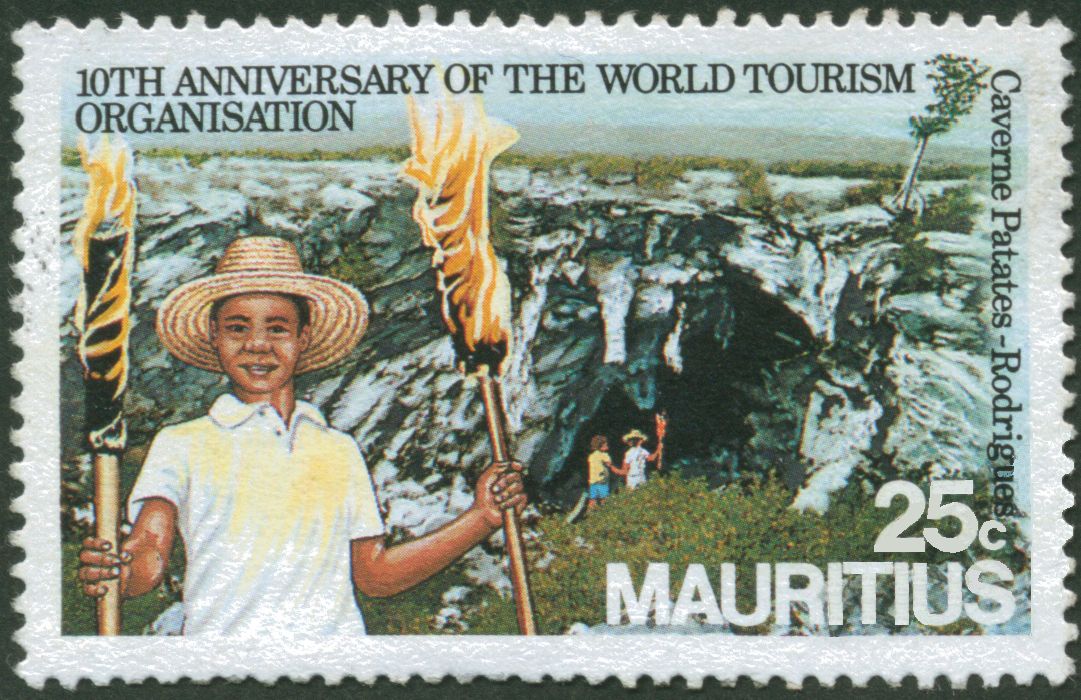
Fig. 4. Mauritian stamp of 1985 showing an entrance to the Caverne Patate system and a man holding flaming torches of the type used for illumination until 1991.
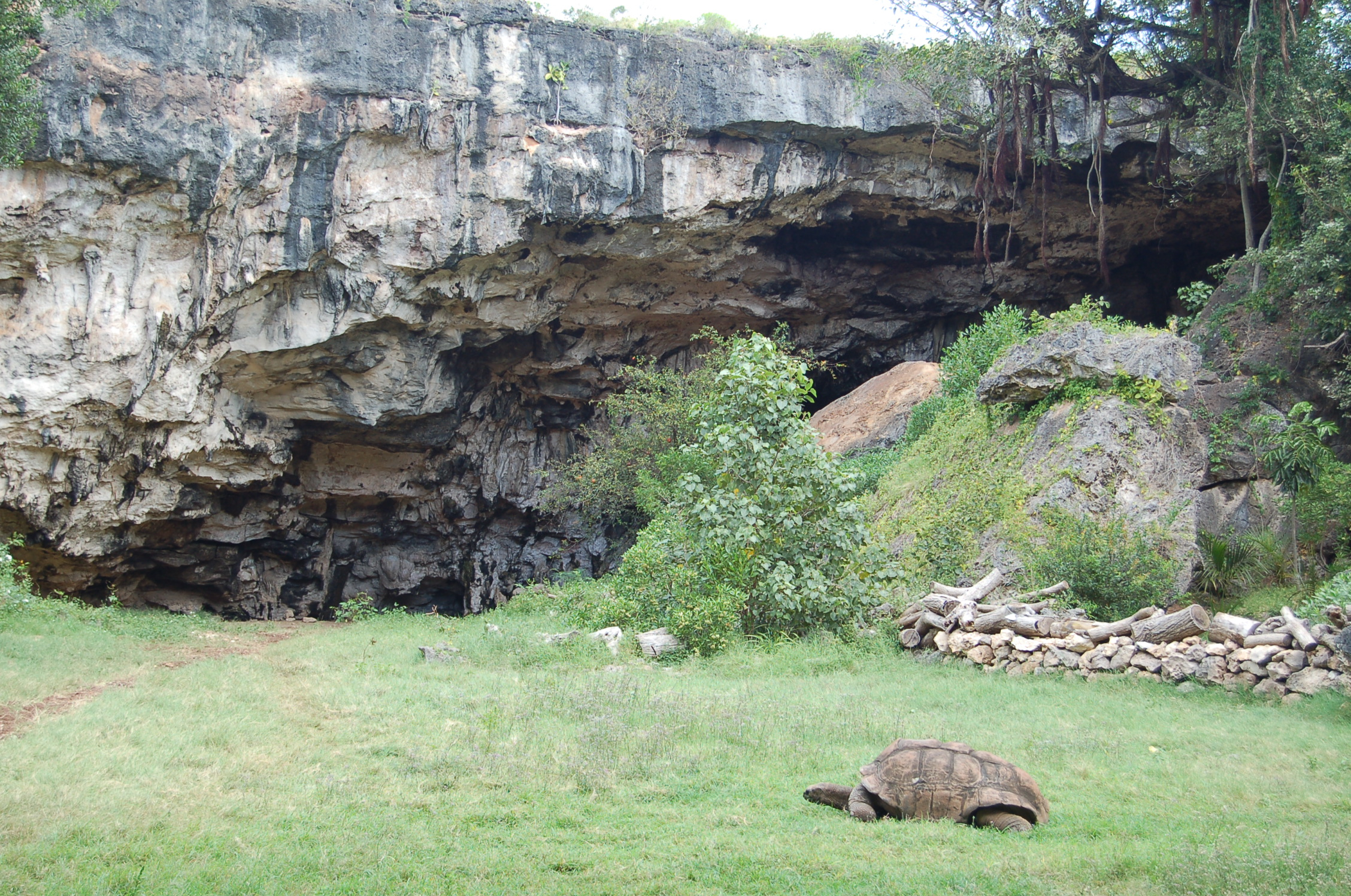
Fig. 5. The very large entrance to Grande Caverne and the first of the giant tortoises to be (re) introduced to the reserve.
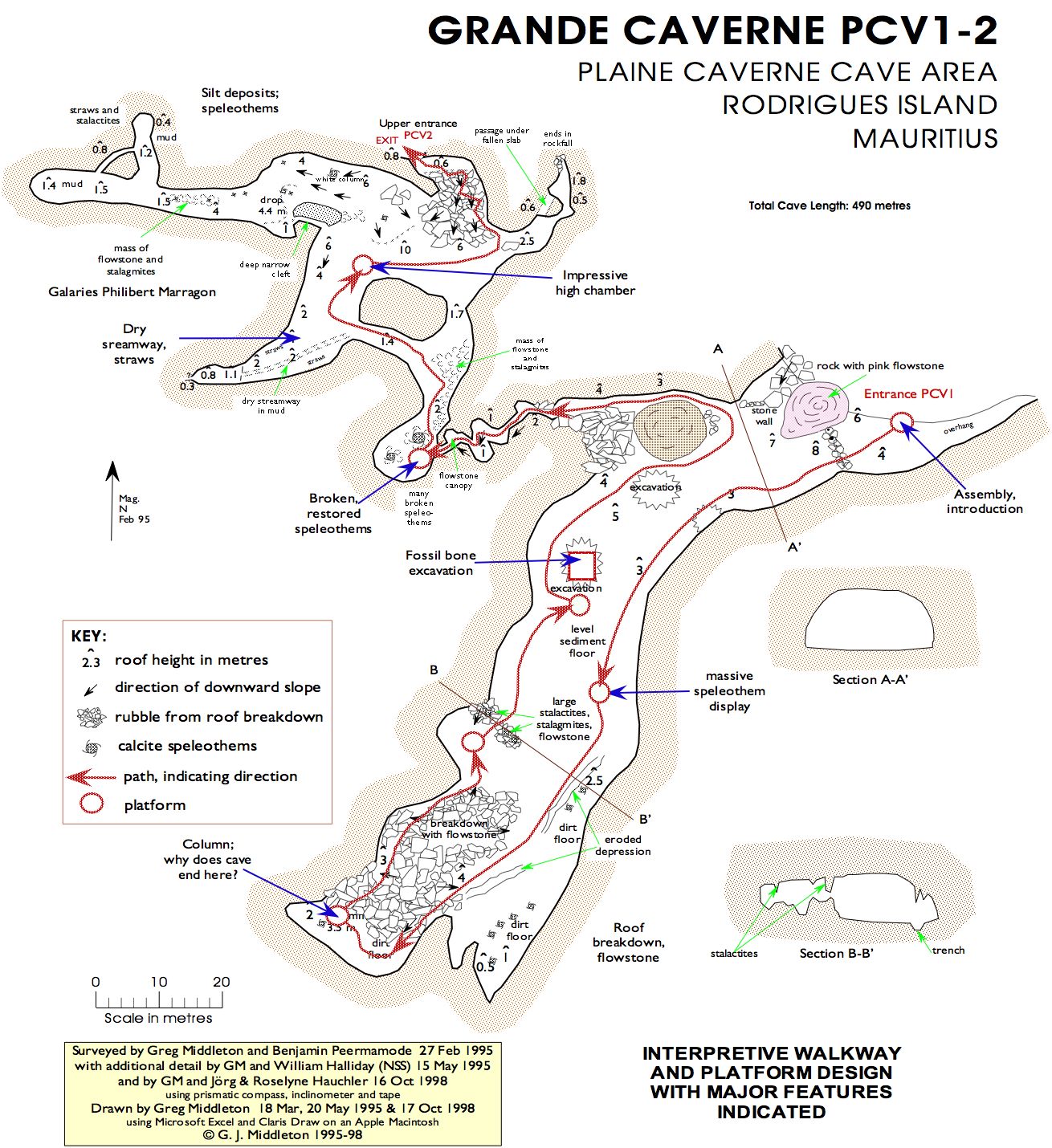
Fig. 6. Plan of Grande Caverne showing generalised route of walkway and major features.
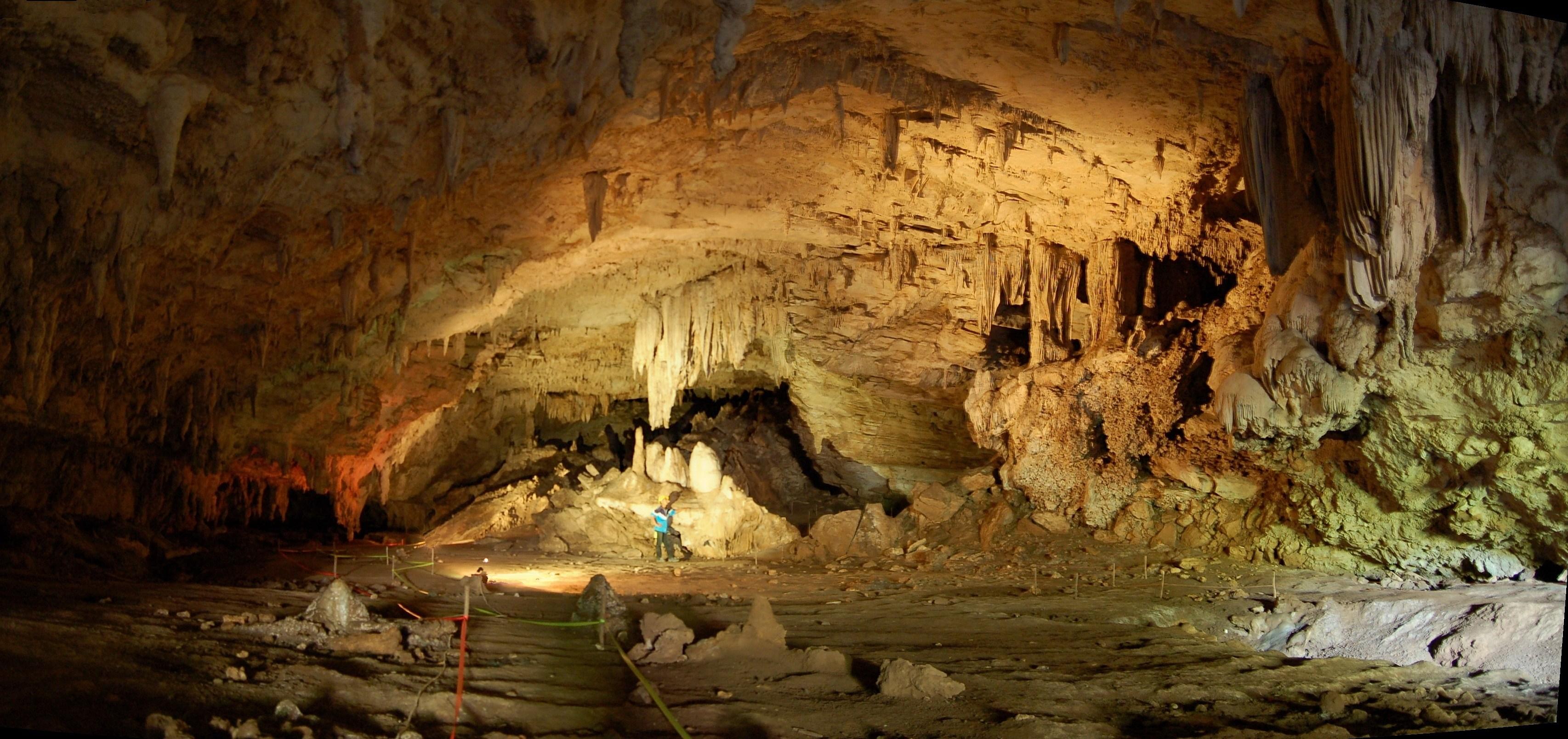
Fig. 7. The first platform will provide this fine view of some of the largest decorations in Grande Caverne.
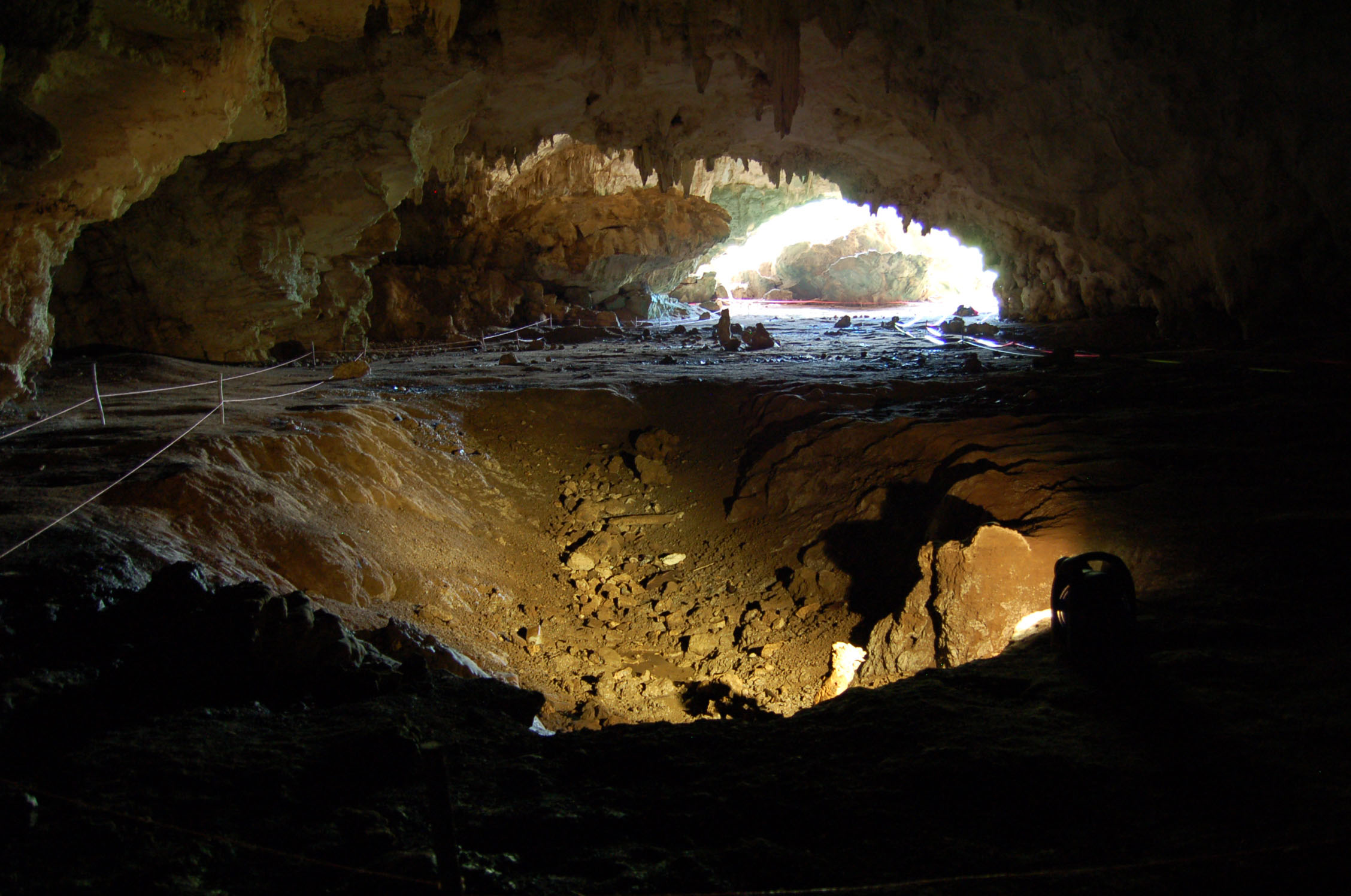
Fig. 8. Old palaeontological excavation site in Grande Caverne. The recovery of solitaire and giant tortoise remains from the caves date from 1789 but most excavations were carried out after Cuvier's identification of solitaire bones in 1830 (North-Coombes 1971). Some excavators made no effort to restore sites they investigated, as here in the main chamber of Grande Caverne.